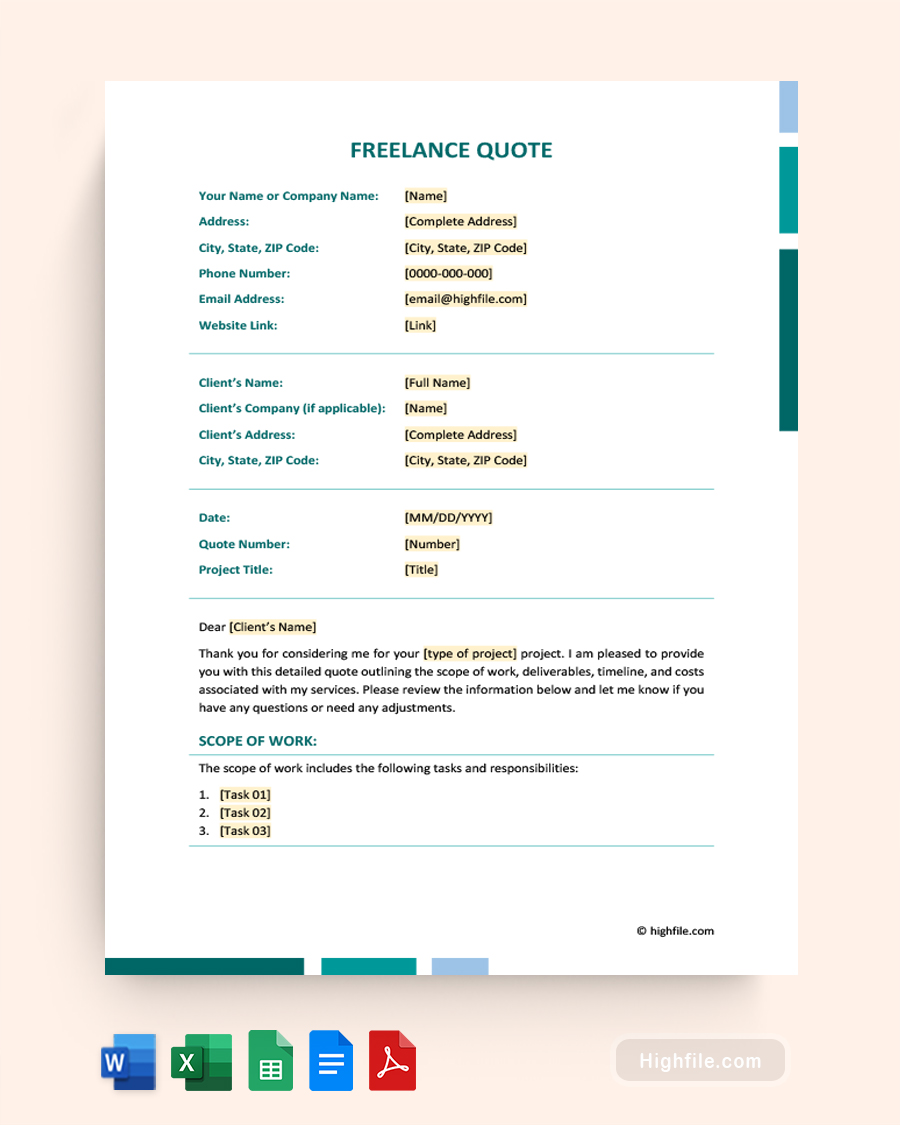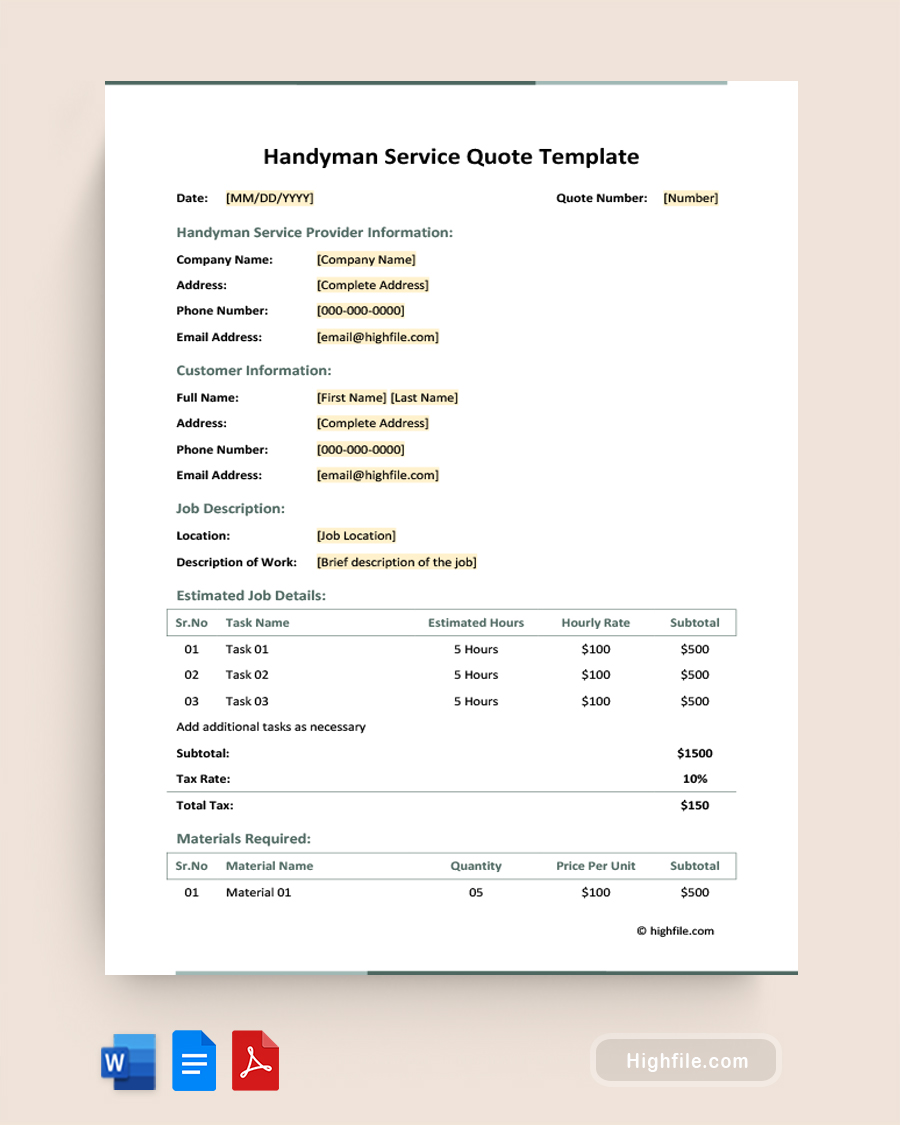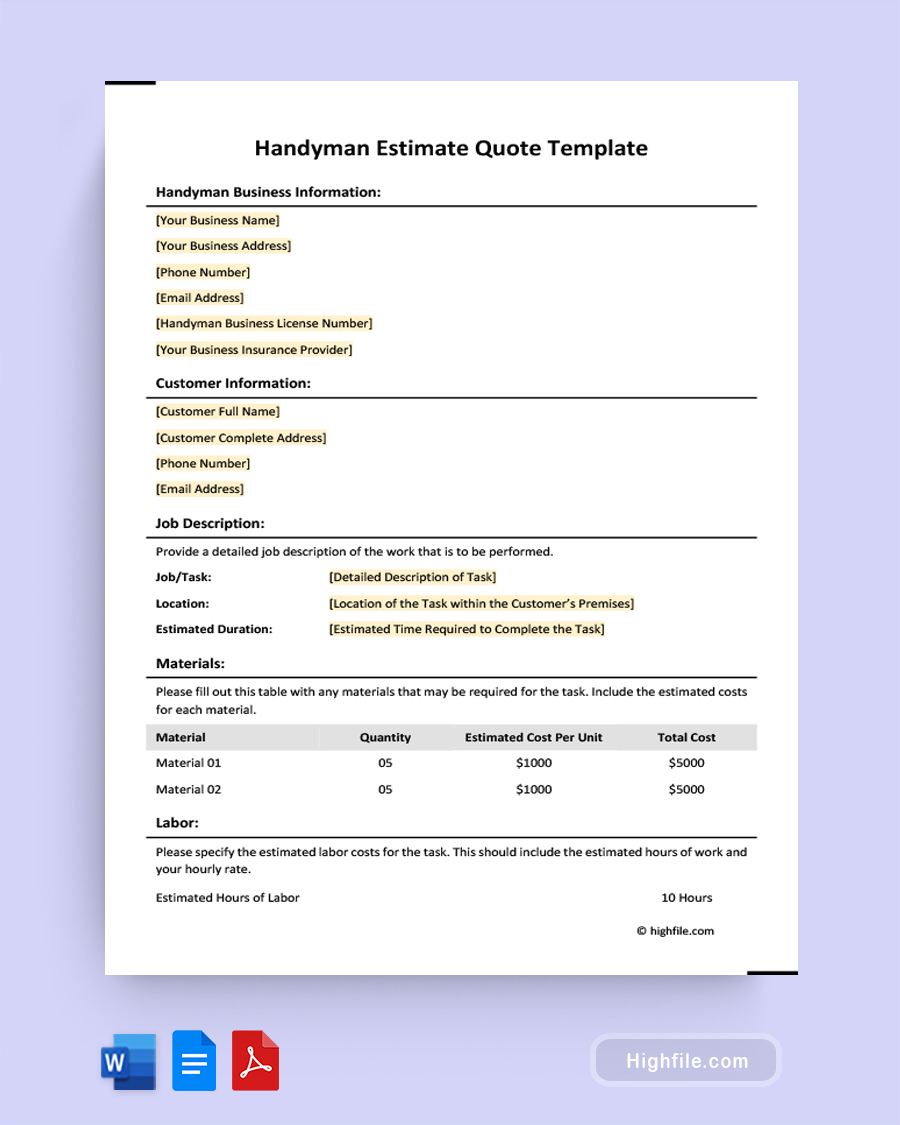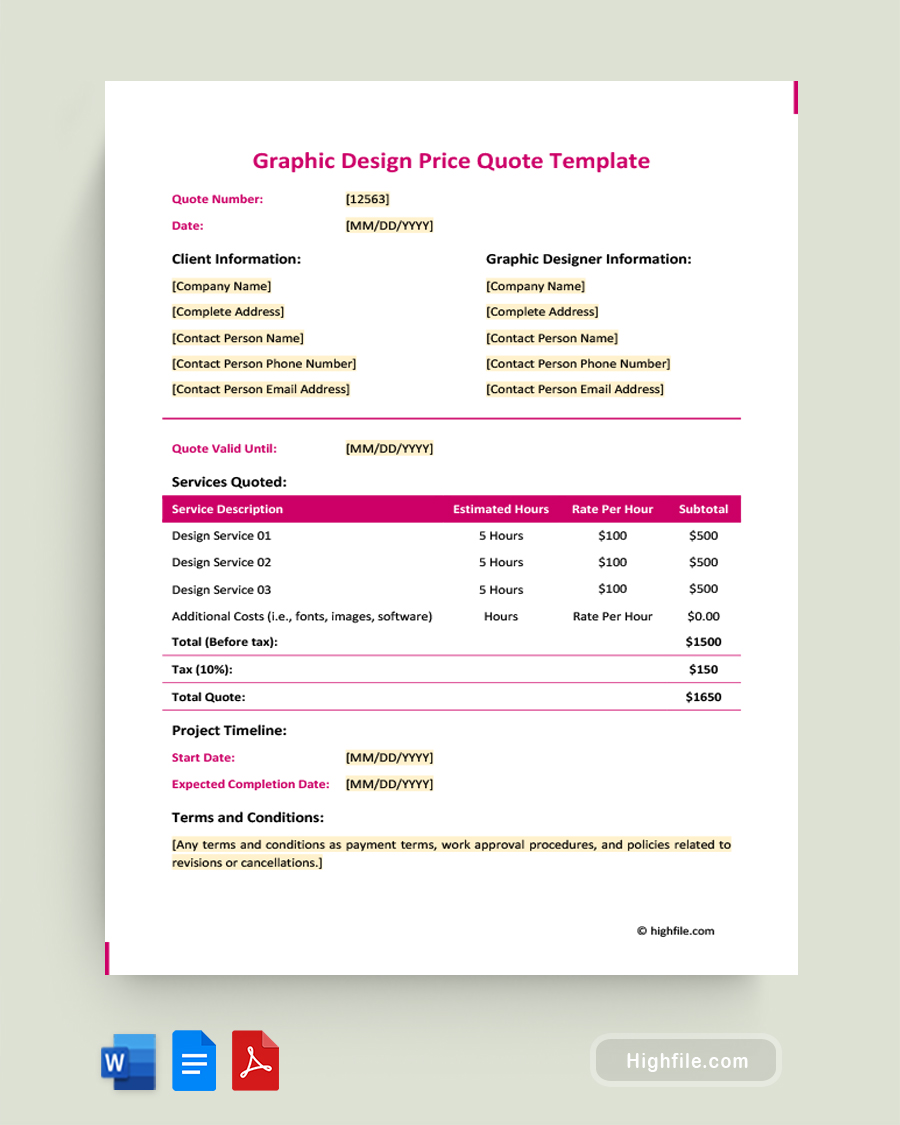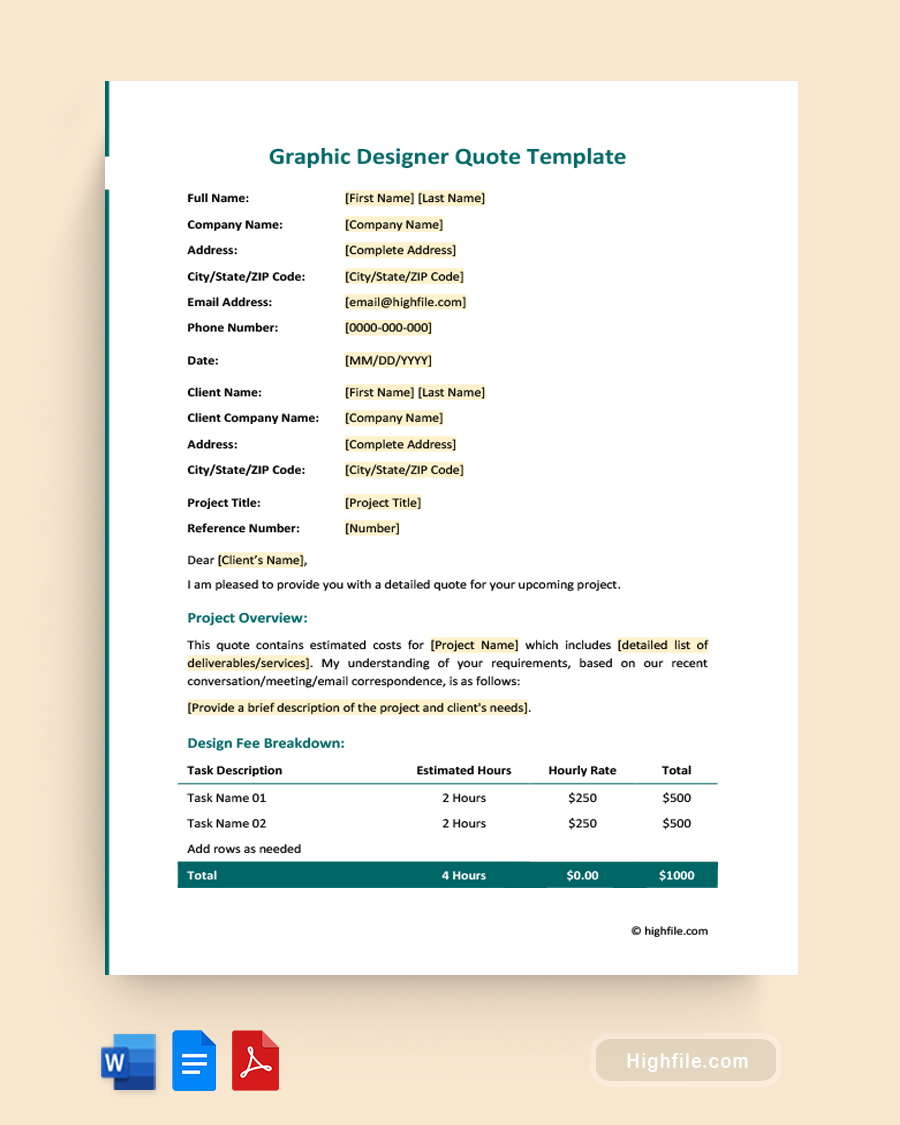As businesses increasingly turn to freelance professionals for specialized skills, it’s crucial to have a streamlined and professional process for creating quotes. A freelance quote template can help. This valuable tool provides a consistent and accurate format for businesses to request quotes from freelancers, which saves time, reduces errors, and projects a professional image to clients. Companies can easily customize their quotes with a well-designed template to fit their unique needs and clientele. We’ll teach you everything you need to know to streamline your process and present your business in the best possible light.
What Is a Freelance Quote Template?
A Freelance Quote Template is a document that freelancers use to estimate the cost of their services to potential clients. It typically includes details such as the scope of work, the timeline for completion, and the estimated cost for the project. A Freelance Quote Template is an essential tool for freelancers to communicate their work’s scope and price to clients and establish clear expectations for both parties. It can help to prevent misunderstandings and disputes and is a professional way to present your services to potential clients.
Why Is Freelance Quote Template Important?
A Freelance Quote Template helps communicate the scope and cost of your work to clients. Here are some reasons why a Freelance Quote Template is important:
- A Freelance Quote Template provides a detailed breakdown of the work to be done, the timeline for completion, and the estimated cost, helping to prevent misunderstandings and disputes.
- The template can be reused for similar projects, saving time.
- It allows the freelancer to quickly provide an estimate to potential clients without starting from scratch.
- It presents a professional image that can help to build trust and credibility with potential clients.
- The quote outlines the payment terms, which helps to ensure that the freelancer is paid for their work.
- Finally, it can serve as a legal document in case of disputes or misunderstandings between the freelancer and the client.
Essential Elements of Freelance Quote Template
A well-crafted freelance quote template can save you time and project a professional image to your clients. Here are the essential elements to include:
- Branding: Incorporate your business’s branding, such as logo and color scheme, to create a consistent and professional look.
- Header: Include a clear and concise header that identifies the document as a quote and includes your business’s name and logo.
- Client Details: Include the client’s name, company (if applicable), and contact information.
- Quote Number: Assign a unique identifier for each quote to make tracking and referencing easier.
- Validity Period: Specify the duration of the quote’s validity to encourage prompt responses.
- Formal Salutation and Introduction: Greet the client and provide a brief introduction.
- Scope: Clearly outline the scope of work, including the tasks and objectives to be completed.
- Deliverables: List the specific deliverables the client can expect to receive from the project.
- Selling Points: Highlight your services’ unique selling points or competitive advantages to differentiate yourself from other freelancers.
- Exclusions and Fees: Specify any items or services not included in the quote and outline any additional fees or expenses that apply.
- Terms and Conditions: Include your terms and conditions, such as project revisions and cancellation policies.
- Timeline: Provide a detailed timeline for completing the project, including key milestones and deadlines.
- Payments: Outline the payment schedule, including deposit requirements and final payment due dates.
- Call to Action: Encourage action with a specific call to action, such as “Please sign and return this quote to accept.”
- Acceptance, Signature, and Date Lines: Provide space for the client to sign and date the document to indicate acceptance of the terms.
- (Optional) Gratitude Statement: End the quote with a thank-you message to express your appreciation for the opportunity to work with the client.
Pro Tip: Highlight your skills and abilities. By demonstrating your accomplishments and key differentiators, you can help build client confidence and grow your business.
How to Create a Freelance Quote Template
Learning how to create and use a freelance quote template is an instrumental skill. By following the steps below, you’ll be well on your way to streamlining your process, projecting a professional image, and ultimately securing more business from satisfied clients.
- Format and Customization: Choose a layout that’s easy to use and customize for each quote request.
- Header: Include space for your business’s name and logo and a label indicating that this is a quote.
- Client Information and Details: Provide space for the client’s name, company (if applicable), and contact information.
- Quote Number: Each quote needs a reference number for easy reference and tracking.
- Date and Expiration Date: Provide the date created and when the offer expires.
- Project Specifics: Spaces for project description, deliverables, and timelines.
- Exclusions and Fees: This is where you add items or services not included in the quote and outline any additional fees or expenses.
- Terms and Conditions: Determine and include the terms and conditions of the agreement.
- Timeline: Estimate a timeframe for completion, including key milestones and deadlines.
- Payment Schedule: Create a custom payment schedule.
- Call to Action: Include a clear call-to-action statement.
- Footer with Contact Information: Include your business’s contact information, such as phone number, email, and website.
- Review and Edit: Before sending out the quote, review it carefully to ensure accuracy and clarity and make any necessary edits.
FAQs
Deciding on the right pricing strategy for your freelance quote depends on several factors, including your experience, skills, the complexity of the project, and the market demand for your services. Here are tips to help decide on the right pricing strategy:
ᐅ Market research: Research the market rates for similar projects and compare them with your skills and experience.
ᐅ Scope and timeline: Consider the project’s complexity and completion timeline. Projects that require more specialized skills or have shorter timelines may warrant a higher rate.
ᐅ Determine costs: Calculate overhead costs, such as taxes, software, and equipment, and factor them into your pricing strategy. Also, remember your profit margin when determining your rates.
The best way to present optional services or discounts in your quote is to be clear and transparent. Include them as separate line items in your quote, clearly indicating which items are optional and which are required. If you offer a discount, state the discount amount and any conditions that apply clearly. It can also be helpful to explain the value that the optional services or discounts can provide to the client.
If a client asks for revisions or changes to the quote after submission, the first step is to carefully review the request and determine if the changes are reasonable and feasible. If the changes are straightforward and will not significantly impact the project scope or timeline, then make the changes and send a revised quote to the client. However, if the changes are more complex or significantly impact the project scope or timeline, you may need to negotiate with the client to determine a new quote and timeline.
Key Points
A freelance quote template is essential for a freelance business. The template serves as a standardized quote format, ensuring consistency and accuracy. It helps save time and money in preparing quotes by streamlining the process and reducing errors. A well-designed freelance quote template presents a professional image to potential clients and enables you to stand out in a competitive marketplace. Using a template, you can easily customize the details of their quote to meet their specific needs and project requirements.
